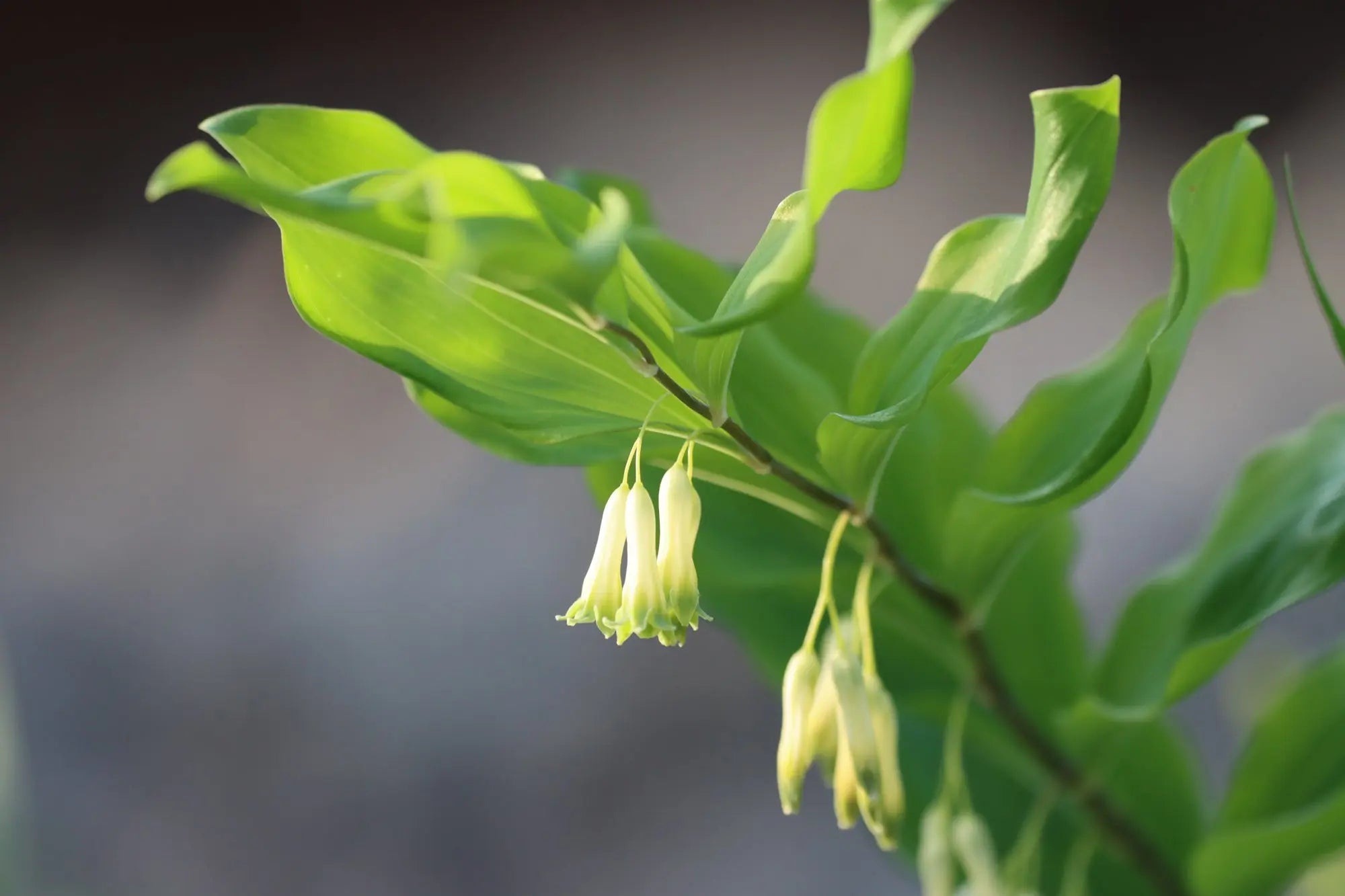Solomon’s seal, called Polygonatum Odoratum in the scientific world, is a shade-loving herbaceous perennial species from the family Asparagaceae. The plant only grows up to 18” to 24” in height and is characterized by its unbranched, arching stems and tubular white and green fragrant flowers that are borne on the underside of the stems. These two distinguishing characteristics have also given the plant its common names of angular Solomon’s seal and scented Solomon’s seal.
The plant not only has a unique appearance due to its flowers, but it is also packed with chemical compounds that offer plenty of health benefits. The root of Solomon’s seal is used in Traditional Chinese Medicine (TCM) as well as the traditional Korean medicinal system for thousands of years.

What Does the Solomon’s Seal Contain? The Chemical Profile of Solomon’s Seal Plant
As described by the Spanish botanist, chemist, and pharmacist Pius Font i Quer, in his book Plantas Medicinales, the root of P. Odoratum contains flavonoids, asparagine, mucilage, saponins, quercitol, quinine gluconate, and a glycoside that works as a cardiac tonic.
A Brief History of Solomon’s Seal Use
The root of Solomon’s seal has long been used for a range of ailments and health problems, including joint disorders, inflammatory and pulmonary issues, and to remove retained water from the body. It was also used to strengthen the heart, regulate blood sugar level,relieve intestinal problems, and topically heal wounds and bruises.

Health Benefits of Solomon’s seal
Solomon’s seal can help improve health in various ways. Here are some of them:
It Is Great for Musculoskeletal Issues
The root of Solomon’s seal has a jointed appearance, which looks like bone joints. This, as per the Doctrine of Signatures, is believed to hint towards the plant’s distinctive benefits for bones. It has anti-inflammatory and pain relieving properties and is also capable of stimulating tissue regeneration. Solomon’s seal also has amphoteric properties, which means it can help the joints, muscles, tendons and ligaments regain their appropriate tension and alignment, which helps restore their natural functions.
Solomon’s seal root is great for joint pain, inflammation, and injuries, including the ones caused by repetitive movements over a long period. It is particularly considered useful for knee issues. The scientific name of the plant also refers towards this very use. The wordPolygonatum is derived from the Greek wordspoly and gonu, meaning many and knee joint, respectively.

It Helps Improve Heart Health
Solomon’s seal has traditionally been used to strengthen the heart and improve its functioning, as mentioned above. It does so by releasing tension from the heart muscles, relaxing them along with the tendons in the chest. It also helps improve blood circulation to the heart.
These are only some of the benefits the incredibly powerful Solomon’s seal plant can offer. It can also help alleviate a range of gastrointestinal and respiratory issues. When used topically, the root of Solomon’s seal can help speed up the healing of small wounds and bruises.
Despite offering plenty of incredible health benefits and prolonged use in some Asian traditional medicinal systems, including the TCM, Solomon’s seal plant is underutilized in western herbalism. It’s about time that we incorporate this powerful herb in our arsenal to get rid of various issues and boost health.




Share:
Learn the Herbs: Milk Thistle
Learn the Herbs: Blue Vervain Health Benefits